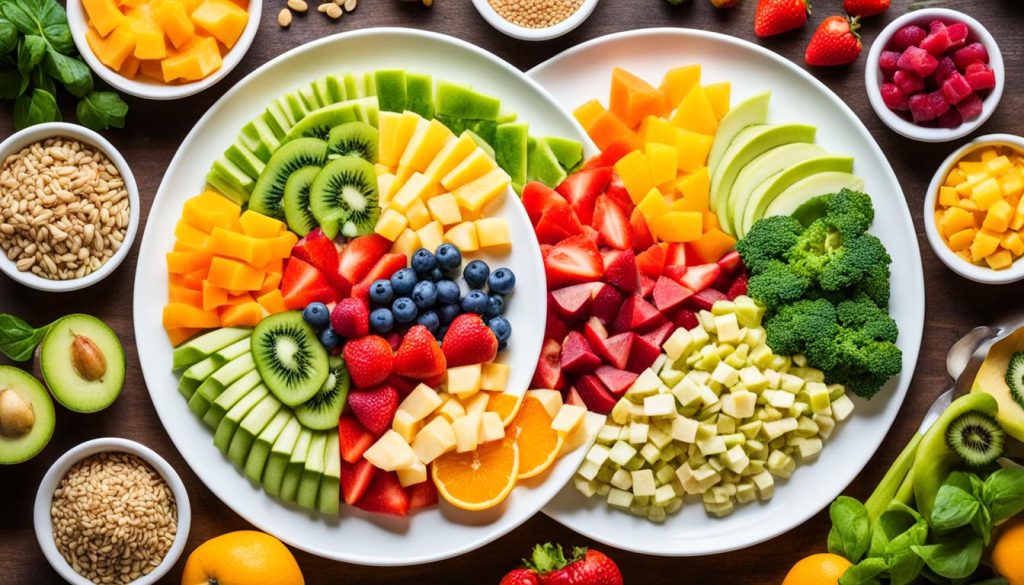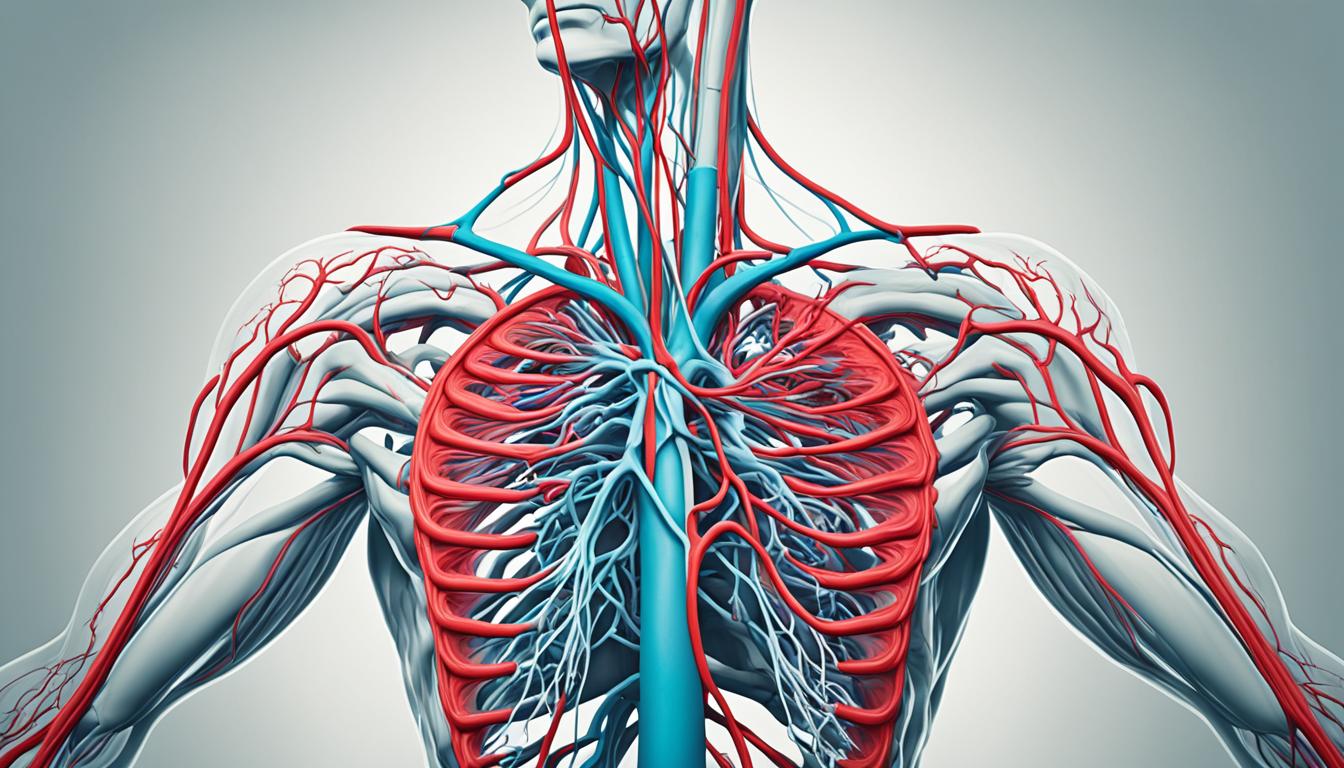Did you know that high blood pressure affects about 108 million Americans?
High blood pressure, also called hypertension, is a big health issue. It can cause heart disease and other serious problems. But, you can do things to prevent and control high blood pressure. This can lower your risk of these bad outcomes.
Key Takeaways:
- High blood pressure affects millions of Americans and can lead to serious health complications.
- Preventing and managing high blood pressure can reduce the risk of heart disease.
- By following these 10 key steps, you can lower your blood pressure and improve your overall health.
Lose Weight and Watch Your Waistline
Losing weight is key for controlling blood pressure and cutting heart disease risk. As weight goes up, blood pressure often does too. So, getting rid of extra pounds is a top way to manage blood pressure.
Even a little weight loss helps a lot. Dropping 5-10% of your body weight can lower blood pressure. And it’s not as hard as it sounds.
Making better food choices and moving more can lead to lasting weight loss. It’s especially crucial to watch the weight around your midsection. Extra belly fat increases the risk of high blood pressure more than fat in other areas.
“Losing weight can be a game-changer when it comes to blood pressure control. It not only helps lower blood pressure but also improves overall cardiovascular health,” says Dr. Jessica Johnson, a renowned cardiologist.
To see if belly fat is a problem, measure your waist. Find the point halfway between your last rib and the top of your hip bone. Use a tape measure around this spot without squeezing your skin too tight. For men, a waist size over 40 inches is high. For women, it’s over 35 inches. Both are linked to a higher risk of high blood pressure.
By focusing on losing weight and keeping an eye on waist size, you can greatly improve blood pressure. And you’ll decrease your chances of hypertension-related problems.
| Benefits of Weight Loss for Blood Pressure Control | Risk Factors of Carrying Excess Weight around the Waist |
|---|---|
|
|
Exercise Regularly
Moving your body regularly is key to managing high blood pressure and keeping your heart healthy. Adding exercise to your daily life can really help lower your blood pressure. It also fights off heart disease.
Try to get at least 30 minutes of exercise each day. This is good for your blood pressure. Activities like walking, jogging, swimming, or biking are great for this. They make your heart stronger and help lower your blood pressure.
When you do aerobic activities, your heart gets stronger and works better. This type of exercise also improves how well blood moves through your body. It takes some of the pressure off your arteries and lowers your blood pressure.
Strength training is another good exercise for your blood pressure. This includes lifting weights or using your body weight. It builds muscle which helps with blood flow. Stronger muscles mean better blood pressure control.
| Exercise Type | Benefits |
|---|---|
| Aerobic Exercises | – Lower blood pressure – Strengthen the heart – Promote healthy blood flow |
| Strength Training | – Support blood flow – Enhance blood pressure control |
Before starting to exercise, talk to a doctor, especially if you have health issues or take medicine. They can tell you the best exercises for you. They’ll consider what you need for your health.

Regular exercise is great for managing blood pressure. Try aerobic activities or strength training. Find something fun that you can keep doing. Start easy, especially if you’re new to working out. Then, slowly do more as you get better. Exercise is a great way to take charge of your blood pressure and overall health.
Follow a Healthy Diet
Eating whole grains, fruits, vegetables, and low-fat dairy is key to lowering blood pressure. The Dietary Approaches to Stop Hypertension (DASH) diet is effective for this. It focuses on foods low in sodium and rich in potassium, magnesium, and calcium.
The DASH diet aims to reduce sodium and increase potassium. This approach helps regulate blood pressure. Sodium leads to water retention, increasing blood volume and pressure. Potassium counteracts sodium’s effects, aiding in maintaining healthy blood pressure.
This diet advises less than 2,300 milligrams of sodium daily. For high blood pressure, less than 1,500 milligrams per day is better. Achieve this by avoiding processed foods and choosing fresh, whole options.
The DASH diet also means:
- Eating fruits and vegetables, which are great for controlling blood pressure.
- Choosing whole grains to help lower blood pressure.
- Opting for lean protein sources over fatty meats.
- Choosing low-fat dairy for calcium without bad fats.
- Limiting sweets and sugary drinks to reduce blood pressure risks.
Foods Rich in Potassium
Potassium-rich foods are vital for managing blood pressure. They offset sodium’s effects and lower pressure. Great sources include:
| Food | Potassium Content (per 100g) |
|---|---|
| Bananas | 358mg |
| Oranges | 181mg |
| Tomatoes | 237mg |
| Spinach | 558mg |
| Avocado | 485mg |
| Sweet potatoes | 337mg |
Add these potassium-rich foods to your diet to help control blood pressure. Always consult a dietitian or healthcare professional for a diet plan tailored to you.

Reduce Sodium and Limit Alcohol
It’s key to cut down on salt to control blood pressure. Too much salt can make your body hold extra water. This raises blood pressure. Aim to eat no more than 2,300 milligrams of salt a day. This is important for those with high blood pressure or those at risk.
Here are some ways to eat less salt:
- Eat more fresh foods. Processed foods like canned soups and deli meats are high in salt. Choose fresh or homemade options instead.
- Check food labels. Look at how much salt is in food before you buy it. Seek out products labeled “low sodium” or “sodium-free”.
- Flavor with herbs and spices. You can use these for taste instead of salt. This makes food delicious without adding salt.
- Try new cooking methods. You can grill, steam, or roast food. These methods help bring out the natural taste of food without salt.
Drinking too much alcohol can also affect blood pressure. While a little alcohol may be okay, too much can raise blood pressure. It’s best to drink alcohol in moderation to avoid hypertension.
Men should limit alcohol to two drinks a day and women to one. Remember, too much alcohol can erase its small benefits. So, it’s all about balance.
In short, eating less salt and not drinking too much alcohol are key for healthy blood pressure. Making these lifestyle changes can greatly improve your heart health.
Get Enough Sleep and Manage Stress
Poor sleep and stress can really affect your blood pressure. Not sleeping enough can raise your risk of high blood pressure. This happens because lack of sleep makes our body more stressed.
To keep your blood pressure healthy, make sure you sleep enough. Try to get between 7-9 hours of sleep every night. Make your sleeping area peaceful, stick to a bedtime routine, and relax before bed to sleep better.
Handling stress well is also key to controlling blood pressure. Stress can make your blood pressure go up for a short time. If you’re always stressed, it might lead to high blood pressure later.
Doing exercises like running or lifting weights can lower stress and keep you healthy. Practices such as deep breathing, meditation, or yoga can help with stress too. Also, managing your time well, setting limits, and having ways to deal with stress are important for reducing it.




